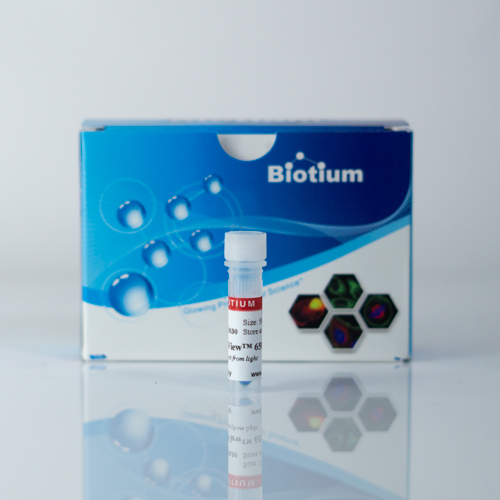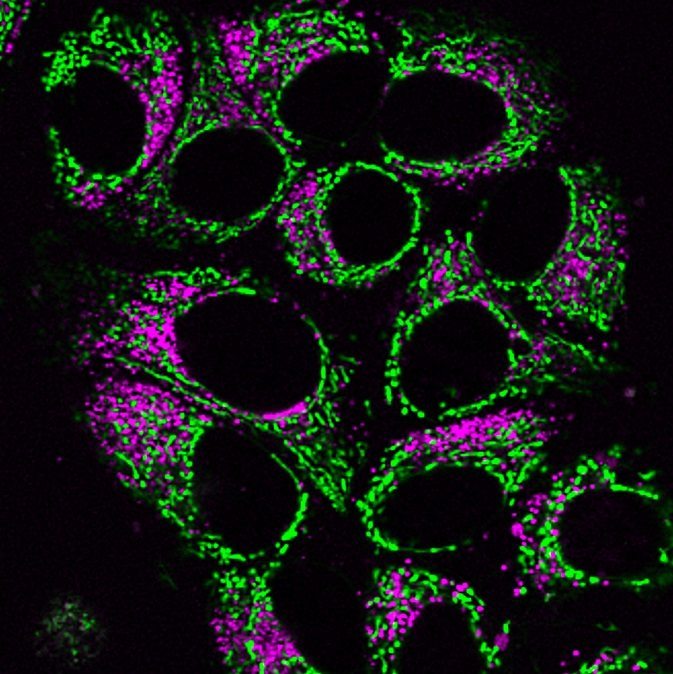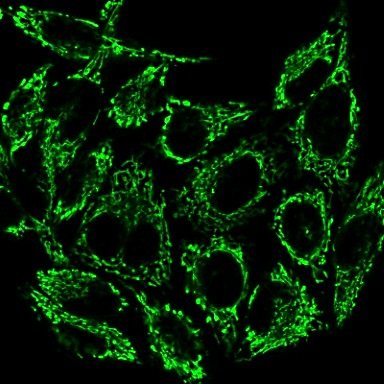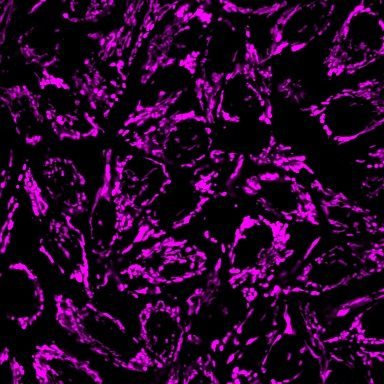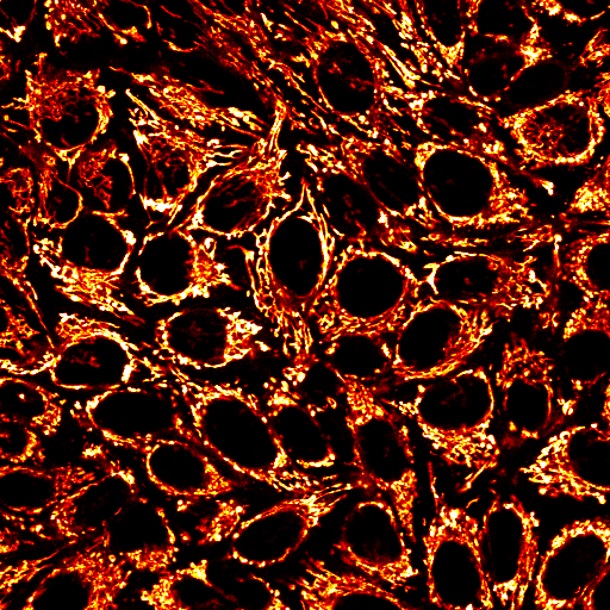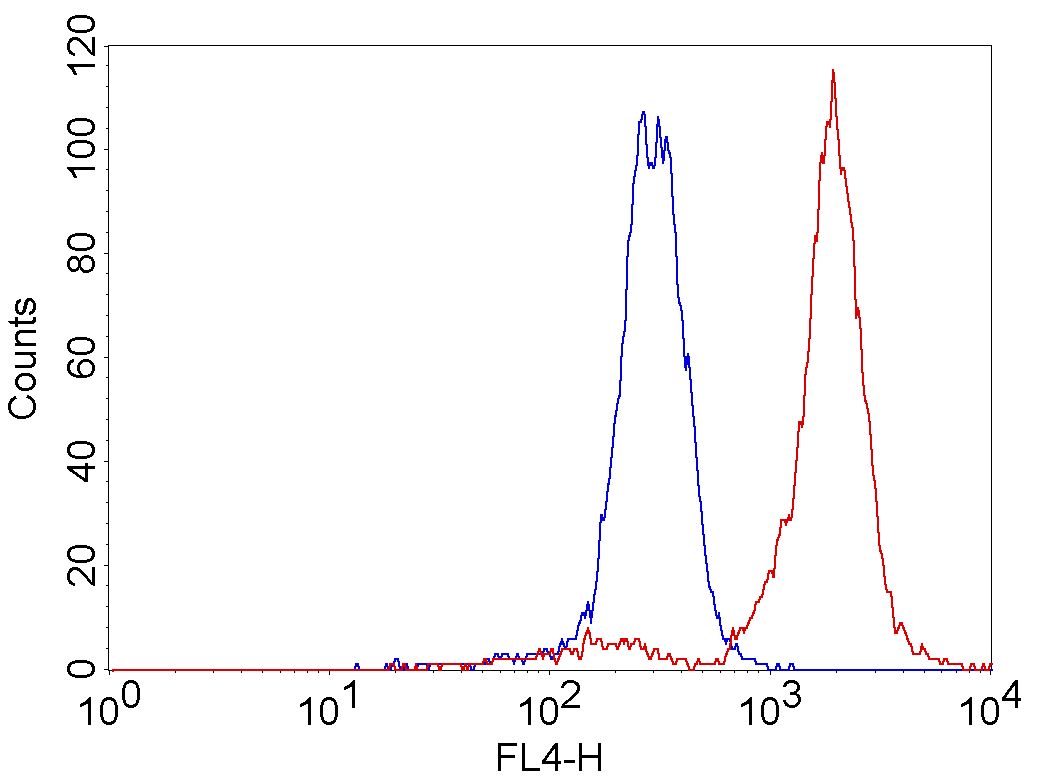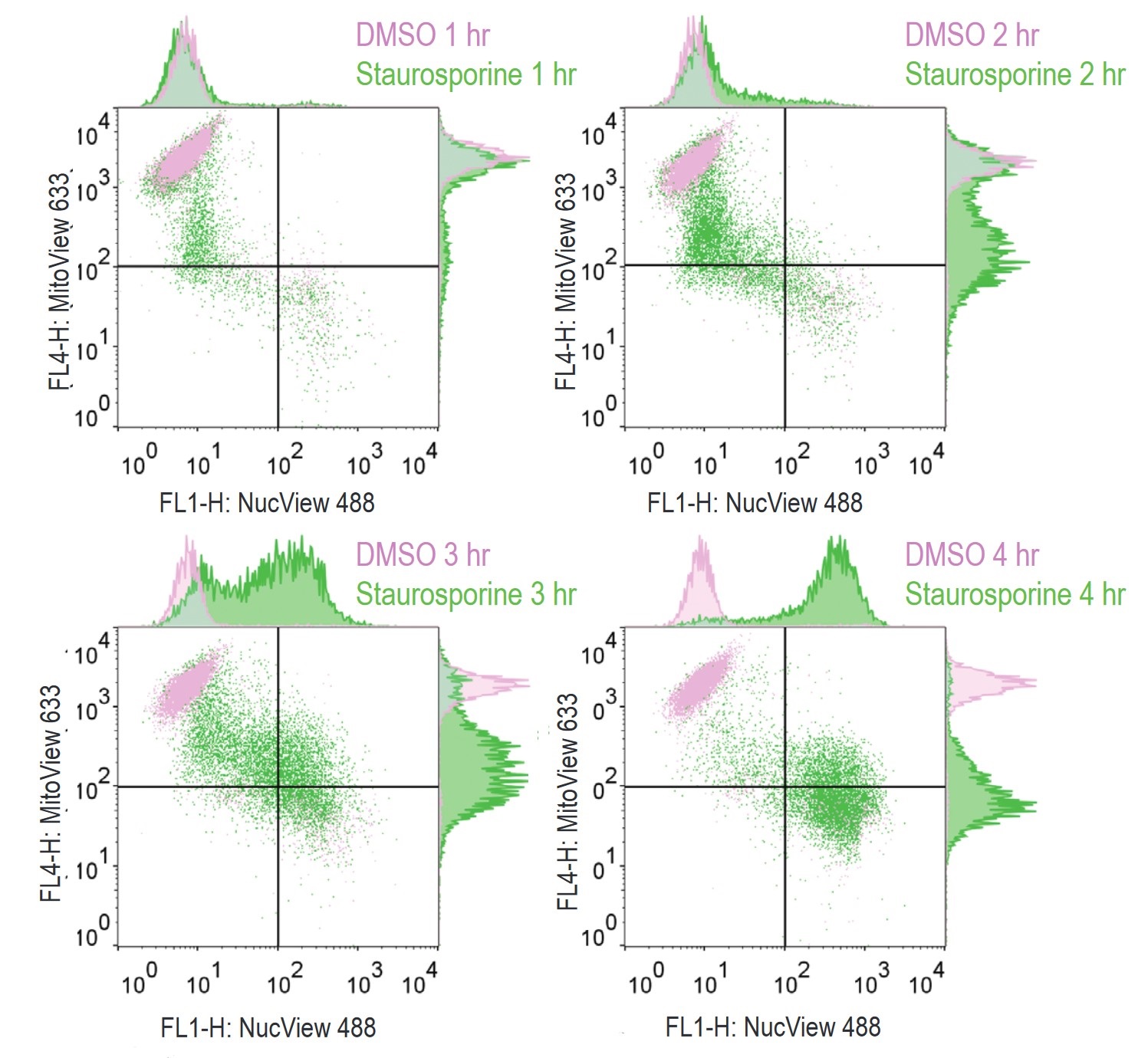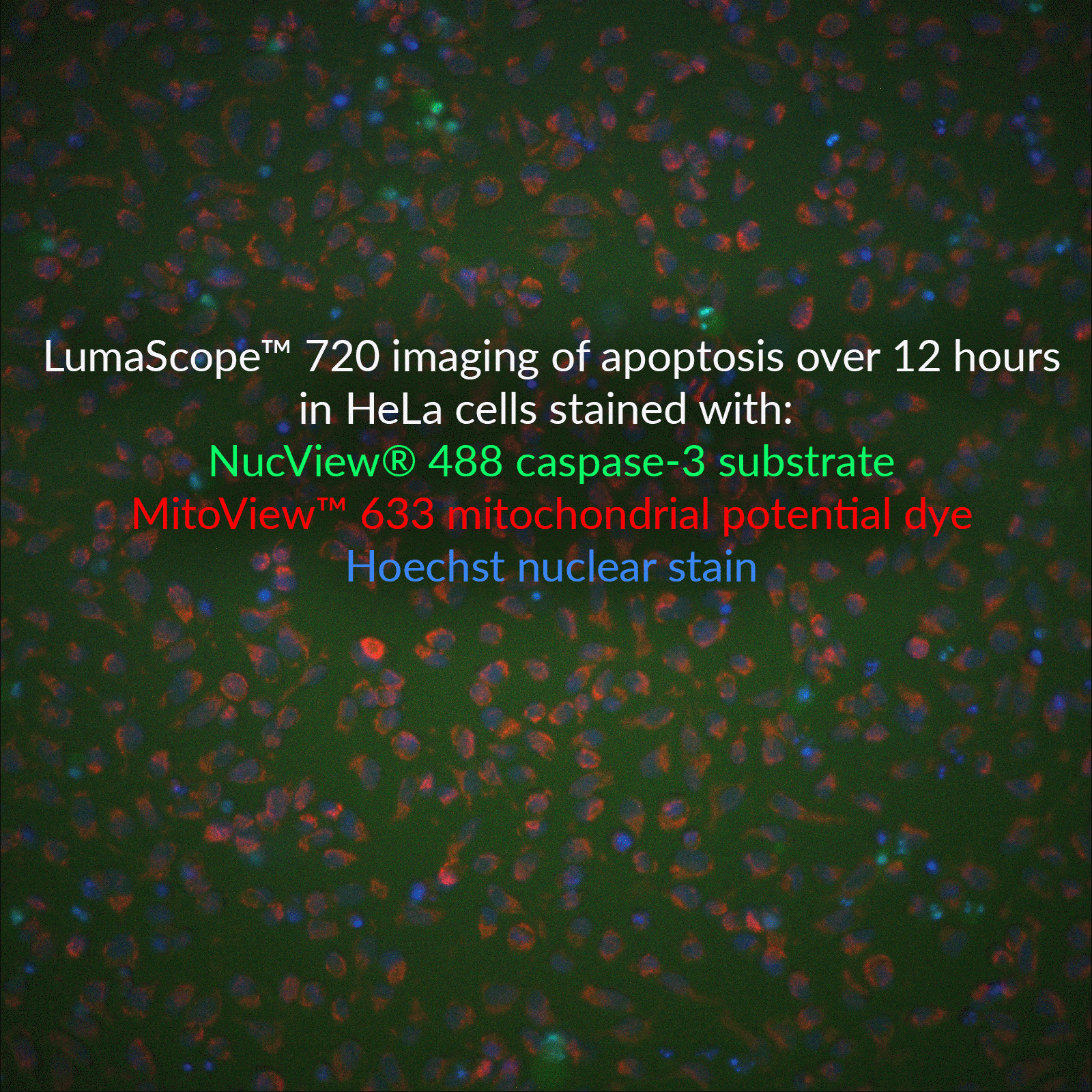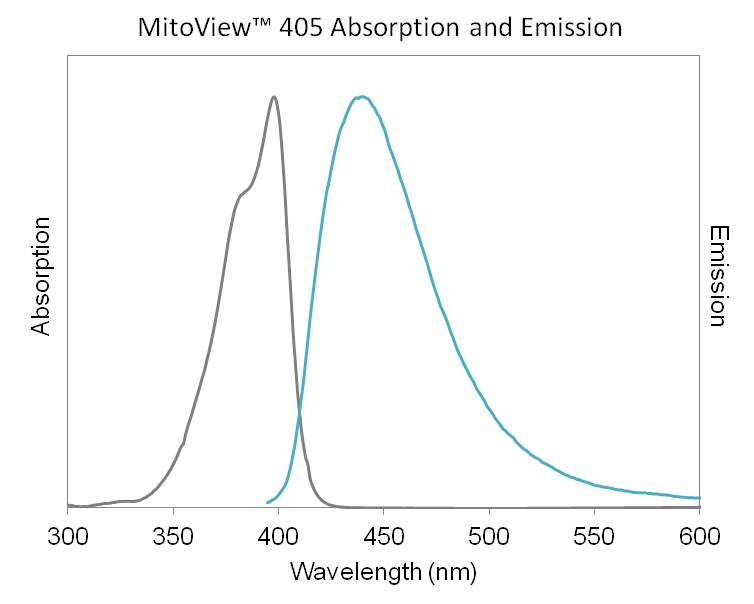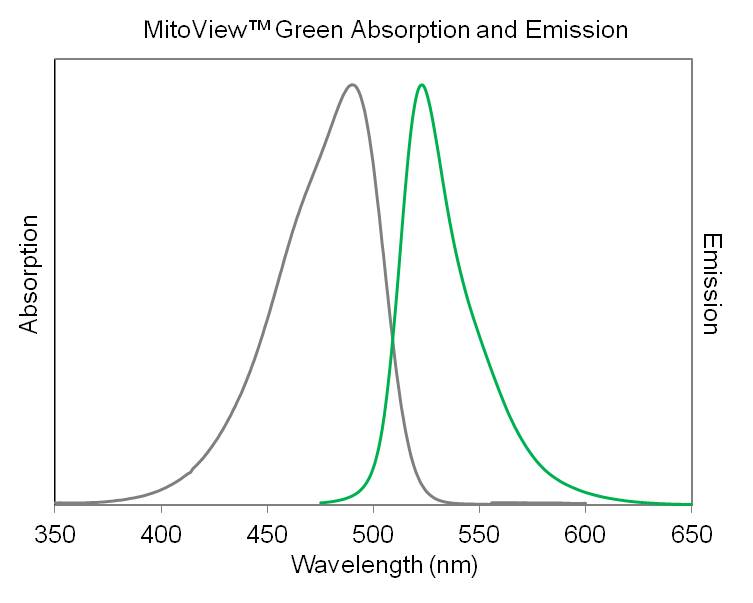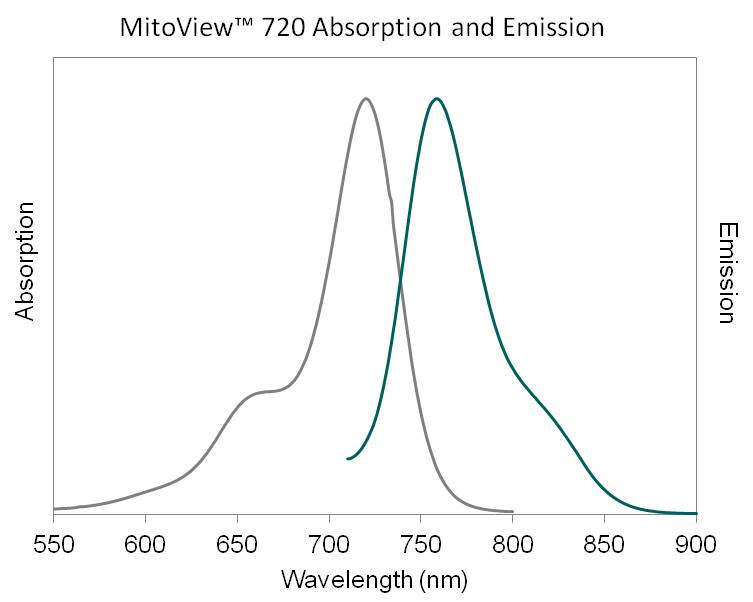MitoView™ Mitochondrial Dyes
Fluorogenic mitochondrial stains for live cells that rapidly accumulate in mitochondria and can be imaged without washing.
Please fill in the inquiry form and we will contact you shortly.
Wishlist updated! View wishlist
Product Description
MitoView™ Dyes are fluorogenic mitochondrial stains for live cells.
- Rapidly stain mitochondria in live cells without washing
- Bright, photostable, and non-toxic for long-term live cell imaging
- Available in five colors with blue, green, far-red, or near-IR emission
- Monitor mitochondrial membrane potential with MitoView™ 633
- Potential-independent MitoView™ Green can also stain fixed cells
- MitoView™ 720 is a unique near-IR mitochondrial dye
These dyes rapidly accumulate in mitochondria and can be imaged without washing. They are available with blue, green, far-red, and near-infrared fluorescence. Cells can be fixed before staining with MitoView™ Green only, the other MitoView™ Dyes are for use in live cells only. We also offer MitoView™ Fix 640, a far-red mitochondrial stain suitable for no-wash, long term staining in live cells that is well-retained after fixation, permeabilization, and subsequent immunofluorescence staining.
Note: For staining mitochondria in fixed cells or tissue sections, we recommend using one our Mitochondrial Marker Antibodies, available with a wide selection of bright and photostable CF® Dyes and other conjugations.
MitoView™ Dyes can also be used to stain mitochondria in yeast and the cell interior of bacteria (gram-positive and gram-negative). See our Cellular Stains Table for more information on how our dyes stain various organisms.
MitoView™ Dyes
| Product | Ex/Em | Detection channel | Potential-dependent? | Size | Cat. No. |
|---|---|---|---|---|---|
| MitoView™ 405 | 398/440 nm | DAPI | Partial† | 50 ug | 70070-T |
| 20x50 ug | 70070 | ||||
| MitoView™ Green | 490/523 nm | FITC, GFP | No | 50 ug | 70054-T |
| 20x50 ug | 70054 | ||||
| MitoView™ 633 | 622/648 nm* | Cy®5, APC* | Yes | 50 ug | 70055-T |
| 20x50 ug | 70055 | ||||
| MitoView™ Fix 640 | 648/670 nm | Cy®5, APC | Yes‡ | 50 ug | 70082-50ug |
| 10x50 ug | 70082 | ||||
| MitoView™ 650 | 644/670 nm | Cy®5, APC | Partial† | 50 ug | 70075-50ug |
| 20x50 ug | 70075 | ||||
| MitoView™ 720 | 720/758 nm** | Cy®5, Cy®7** | Partial† | 50 ug | 70068-T |
| 20x50 ug | 70068 |
**While optimal for Cy®7 settings, MitoView™ 720 is bright enough to be imaged in the Cy®5 channel.
† Dyes localize to the cytoplasm after mitochondrial depolarization, but still retain fluorescence.
‡ Potential-dependent, but reacts covalently with mitochondrial proteins for staining that is retained after fixation and permeabilization.
Find the Right Dye for Your Application
MitoView™ 405
MitoView™ 405 is a blue fluorescent mitochondrial dye with absorbance/emission at 398/440 nm, suitable for detection by confocal microscopy or flow cytometry using settings for DAPI or Pacific Blue®. The dye is membrane permeable and becomes brightly fluorescent upon accumulation in the mitochondrial membrane. Mitochondrial localization is dependent on mitochondrial membrane potential; when membrane potential is disrupted the dye relocalizes to the cytoplasm, but still retains fluorescence. The dye is designed for use in live cells and is not fixable. MitoView™ 405 is a replacement for our original MitoView™ Blue*, and has improved photostability.
MitoView™ Green
MitoView™ Green is a green fluorescent mitochondrial dye with properties similar to those of MitoTracker® Green FM. The dye is non-fluorescent until it partitions into the mitochondrial membrane. The staining relies on mitochondrial mass, not on mitochondria membrane potential. Thus, the dye can be used to stain mitochondria in both live cells and fixed cells. MitoView™ Green may be somewhat membrane potential-dependent in yeast cells.
Note: For optimal staining of mitochondria in fixed cells or tissue sections, we recommends using one our Mitochondrial Marker Antibodies, available with a wide selection of bright and photostable CF® Dyes and other labels.
MitoView™ 633
MitoView™ 633 is a far-red fluorescent mitochondrial dye with absorbance/emission at 622/648 nm. The dye is membrane-permeant and becomes brightly fluorescent upon accumulation in the mitochondrial membrane. Staining is dependent on mitochondrial membrane potential, and can be used to monitor mitochondrial membrane potential in intact cells. The dye is designed for use in live cells, and is not fixable. Note: The optimal detection settings for MitoView™ 633 are the same as for Cy®5 and other far-red dyes. However, the dye also has visible red fluorescence and can be imaged using Cy®3 settings as well. As a consequence, it may not be possible to use the dye for two-color imaging with other red probes.
MitoView™ 650
MitoView™ 650 is a far-red fluorescent mitochondrial dye that is not dependent on mitochondrial membrane potential. The dye has excitation/emission at 644/670 nm for the Cy®5 channel. Unlike MitoView™ 633, it does not bleed into the visible red channel, and so can be combined with red probes for multicolor imaging. The dye fluorescence is not lost after mitochondrial depolarization or fixation, but localization becomes non-specific.
MitoView™ 720
MitoView™ 720 is a near-infrared mitochondrial dye with absorbance/emission at 720/758 nm. While optimally detected using Cy®7 settings, the dye is bright enough to be imaged in the Cy®5 channel, and can be combined with visible red fluorescent probes. Mitochondrial localization is dependent on mitochondrial membrane potential; when membrane potential is disrupted the dye relocalizes to the cytoplasm but still retains fluorescence.
More Mitochondrial Dyes
In addition to MitoView™ Dyes, Biotium also offers several classical dyes for measuring mitochondrial membrane potential. These include JC-1, a ratiometric dye that forms red aggregates in healthy cells, which are reduced to the green monomeric state when mitochondrial membrane potential is lost. We also offer TMRM and TMRE, two red fluorescent dyes that are used to quantitatively measure mitochondrial membrane potential using the Nernst equation.
To view our wide selection of other cellular stains, visit our Cellular Stains technology page or see our Cellular Stains Brochure.
*Note: MitoView™ Blue (70052) has been discontinued and replaced by the improved MitoView™ 405. The original MitoView™ Blue will be available for purchase as a special order while supplies last. Contact techsupport@biotium.com to inquire about availability.

